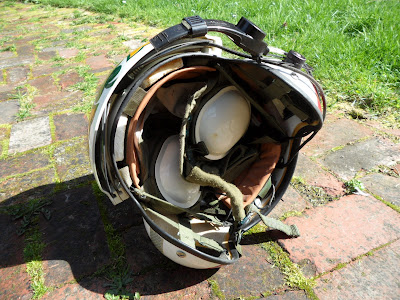I was stationed in Borinquen from 1986 to 1989. I was a Petty Officer, Aviation Machinists Mate Third Class. I flew as an Aircrewman / Flight Mechanic on Aerospatiale Dolphin Helicopters, HH65A models. I flew numerous routine training missions, Law Enforcement missions, Search and Rescue missions and various other "miscellaneous" missions. I held a secret clearance, made a number of rescues, flew some pretty crazy surveillance missions and saw an incredibly beautiful corner of the world from the air. Good times....... glad I did it, not sure if I'd do it again......................... As an Flight Mechanic, or "Flight Mech" as they're known in the service, I flew in the third seat for Search and Rescue and Law Enforcement missions, and occasionally in the Co-Pilot's seat on some Training Missions (I even got some stick time in!). As the Aircrewman, I handled the radios, the rescue hoist and orchestrated the actual rescues, camera, and was observer while on surveillance missions....... refueling, pre- and post- flight inspections........ basically everything except fly the helicopter!
At Airstation Borinquen we had some of the very first HH65A helicopters and we were involved with field testing various new field modifications (sometimes with harrowing results! More on that in a later post!). In a later post I'll showcase some of my awards, flight suit, gear and pictures. For now, here's a photo of the 6527, the helicopter that I did most of my flight time on. This is an archive photo, but I believe that it was taken on a training mission in Puerto Rico about the same time that I was flying down there......... who knows, that could be me at the hoist controls!
 |
| Aerospatiale HH65A Dolphin Helicopter, 6527, circa 1980's
The helmet that I have to show off today, is the second flight helmet that I was issued and the one I used right up until I got out of the Coast Guard in 1989. My first helmet was an older helmet that was pretty worn when I turned it in for this new one. This helmet was brand new out of the box when the Survivalman issued it to me.
The helmet is a Gentex model FSCM 97427. It has both a clear and dark tinted visor and is wired with an a microphone boom and ear speakers. When the flight helmets were issued, they were bright white. The Aviation Survivalman applied the regulation reflective stripes and the Velcro square (for survival strobe light attachment). Any other artwork was left to the new owner. The only requirement at the time was that the "art" had to be in good taste and could only be done with stick-on tape. I applied the "Flying 4-Leaf Clover" and "Shark" on the helmet. My first helmet sported a regulation set of USCG flight wings on the front and on the back, a Gordon and Smith surf sticker that said "Shark Bait" on it. Here's the story with the whole "shark" thing...........
I've gone by the nickname of Shark, or Sharky, for years (thanks Sweet Pea!), and I soon realized that when flying these Dolphin helicopters, there were only three kinds of helicopter fliers:
1. Those who had crashed.
2. Those that were going to crash. 3. Those who quit flying before they crashed! I ended up being #3, but had a few VERY close calls and a couple of VERY hard landings!
There was also this deal that we often flew on classified law enforcement missions where we had "sealed orders" that we opened as we were headed out. All of our radio transmissions were coded and only our radioman back at the station and a radioman in Washington, DC, had the key (and the radiomen were "time-locked" in the radio rooms!). Our positions were all based on a classified "benchmark", actually just a dot in the middle of nowhere, known only to the units on the mission and the command center.............. oh yes, and the USCG command did not want to compromise the coded positions of the units involved, so if they had not heard from us (the helicopter) for something like two hours, only then would they break the codes to send units looking for us. We could only fly for about 3 hours............ so, if we went down on a mission, in the middle of the ocean, we were, as the saying goes, "Shark Bait"......... and yes, we saw LOTS of sharks while flying over the Caribbean!
For an interesting read, pop on over to this article that is hosted over at Collector's Weekly. It's all about the history of painted helicopter helmets, circa Vietnam era............. https://www.collectorsweekly.com/articles/vietnam-helicopter-pilots-wore-their-hearts-on-their-helmets/ So, with all that background, here is the rest of the photo exhibition of the helmet:
Here are some closer details of the helmet on its own.
We always kept the helmets in our issued, nylon helmet bags and wore a "skull cap" on our heads, under the helmets while flying. Here are a couple pictures of the bag and cap.
|

















4 comments:
What was the velcro for ?
The Velcro square on the top of the visor cover was used to attach a battery operated strobe light that we carried in our survival vest. The strobe had the opposite piece of Velcro attached to it and a long cord that kept the strobe attached to the vest in case it was torn free from the helmet.
Cool Helmet, I hoped I would wear one when I flew Jets, but I had too many years with a heavy helmet on as I always had at lease one light on mine.
So do you have the battery powered strobe light and or the survival vest ?
I would like to see some of your lights too.
Post a Comment